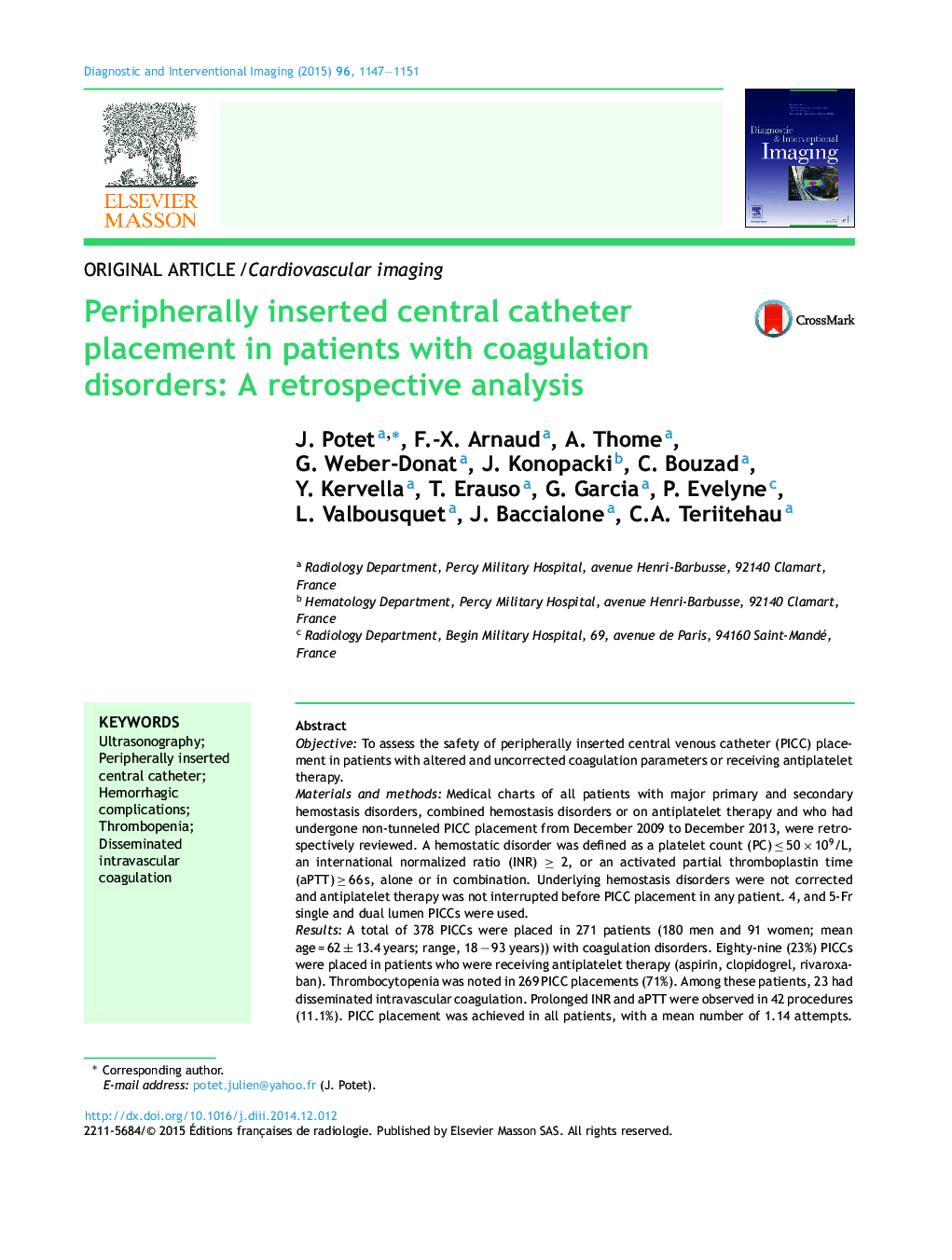| کد مقاله | کد نشریه | سال انتشار | مقاله انگلیسی | نسخه تمام متن |
|---|---|---|---|---|
| 2737676 | 1148086 | 2015 | 5 صفحه PDF | دانلود رایگان |
ObjectiveTo assess the safety of peripherally inserted central venous catheter (PICC) placement in patients with altered and uncorrected coagulation parameters or receiving antiplatelet therapy.Materials and methodsMedical charts of all patients with major primary and secondary hemostasis disorders, combined hemostasis disorders or on antiplatelet therapy and who had undergone non-tunneled PICC placement from December 2009 to December 2013, were retrospectively reviewed. A hemostatic disorder was defined as a platelet count (PC) ≤ 50 × 109/L, an international normalized ratio (INR) ≥ 2, or an activated partial thromboplastin time (aPTT) ≥ 66 s, alone or in combination. Underlying hemostasis disorders were not corrected and antiplatelet therapy was not interrupted before PICC placement in any patient. 4, and 5-Fr single and dual lumen PICCs were used.ResultsA total of 378 PICCs were placed in 271 patients (180 men and 91 women; mean age = 62 ± 13.4 years; range, 18 – 93 years)) with coagulation disorders. Eighty-nine (23%) PICCs were placed in patients who were receiving antiplatelet therapy (aspirin, clopidogrel, rivaroxaban). Thrombocytopenia was noted in 269 PICC placements (71%). Among these patients, 23 had disseminated intravascular coagulation. Prolonged INR and aPTT were observed in 42 procedures (11.1%). PICC placement was achieved in all patients, with a mean number of 1.14 attempts. Peripheral venous access was obtained through the basilic and the brachial vein respectively in 295 (79.1%) and 83 (20.9%) of patients. The placements were performed by residents and fellows in 108 (28.5%) and 270 (71.5%) procedures, respectively. No early or late complications were reported after any procedure. No accidental puncture of the brachial artery occurred.ConclusionIn patients with severe primary and secondary hemostasis disorders, combined hemostasis disorders or on antiplatelet therapy, PICC placement is a feasible and safe procedure and does not require correction of coagulation parameters or discontinuation of antiplatelet therapy.
Journal: Diagnostic and Interventional Imaging - Volume 96, Issue 11, November 2015, Pages 1147–1151
